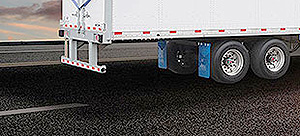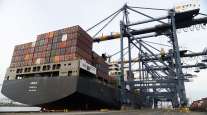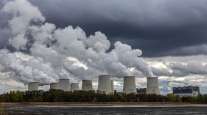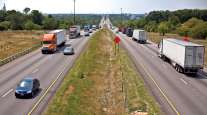Senior Reporter
Biodiesel, Mudflaps Help Improve Emissions

Although large gains have been made in cleaning up new diesel engines, nearly two-thirds of all commercial trucks don’t meet the latest emissions standards.
As of 2017, some 36% of all commercial trucks (Classes 3-8) in the United States rely on the newest generation of diesel engines — a 6% increase over 2016, according to the Diesel Technology Forum, which cited the latest data.
Meanwhile, the Environmental Protection Agency is looking at new ways of verifying compliance with emissions standards.
All new diesel trucks & buses sold since 2011 meet stringent emissions standards established by @EPA @AirResources & @NHTSAgov. EPA’s Cleaner Trucks Initiative will help bring next generation of commercial diesel trucks even nearer to zero emissions than ever before. pic.twitter.com/soGrzU1pUc
— Diesel Tech Forum (@DieselTechForum) May 20, 2019
“We are heavily focused on looking at in-use operations and technologies that can be adopted to improve overall vehicle performance, fuel consumption and reduce NOx emissions,” said Dennis Johnson, director of the agency’s technology assessment center, referring to nitrogen oxide.
The EPA in November announced its Cleaner Trucks Initiative, intended to lead to a future rulemaking to update standards for NOx emissions from heavy-duty truck engines.
He said these engines have become increasingly complex and are very difficult to evaluate prior to production. “By incorporating new ways of streamlining the process and evaluating real-world operations, the hope is we will modernize a lot of the methods for certifying and demonstrating compliance.”
The EPA last addressed NOx emissions in 2001 and they have since been reduced by 40%. Still, the agency expects heavy-duty trucks will be responsible for one-third of NOx emissions from transportation in 2025.
One of the most important ways now to ensure emissions systems operate as intended is to not wait too long to clean the diesel particulate filter, Johnson said.
Soot and ash affect the DPF’s ability to regenerate, or burn off trapped particulate matter. A clogged DPF makes it harder to remove the ash that has accumulated in the filter. That affects filter life and leads to more frequent maintenance intervals as the filter is taken off to try to clean it.
“Modern engines and exhaust systems are optimized for both DPF and SCR (selective catalytic reduction) performance. You want to be taking care of both of these systems as manufacturers recommend,” Johnson said.

Mudflaps have an aerodynamic benefit. (Michelin)
But don’t ignore the lowly mudflap, he said.
“Installing mudflaps closer to the tires is going to be an aerodynamic benefit,” said Johnson.
Placing mudflaps by the underride guard, “that is going to be detrimental to fuel savings.”
Like mudflaps, aerodynamic fairings and low rolling resistance tires are readily available options for reducing emissions, he added. “What we hear from fleets is that they do not always operate at highway speeds so they are not as anxious to install these [aerodynamic] technologies. But we conducted a test program to show that at various lower speeds you still achieve fuel savings benefits.”
One large fleet that has reduced the average age of its Class 8 trucks to 2.8 years is turning to biodiesel as a way to cut emissions by 20% compared with regular diesel.
“One of the big things for us is, biodiesel is completely ready to deploy now with no effort whatsoever from fleets. Other technologies are years away, if not decades in some cases, but with biodiesel you can turn it on tomorrow. You’d have no real issues and would start reducing your emissions immediately,” said Steve Larsen, director of procurement and fuel for Ruan Transport Corp.
Biodiesel is a mixture of chemical compounds known as alkyl esters produced from vegetable oils, fats and greases. Soybean oil and other vegetable oils also may be used as a feedstock for renewable diesel, a separate biofuel that can be used as a replacement for, or blended with, traditional diesel. Biodiesel is mixed with petroleum diesel fuel, often in a blend called B20.
Ruan used about 132 million gallons of biodiesel from 2013 to 2018. It has purchased 1.4 million gallons of renewable diesel in the past 12 months for use exclusively in California.
“We would encourage all [engine] manufacturers to not only allow individual companies to use it, but to formally support, in a blanket statement, using up to B20 and potentially even higher in the future [in their engines]. That is something that we think everybody should be doing today,” Larsen said.
Ruan has run more than 90 million miles using natural gas as a fuel, and has electric trucks on order, too.
Ruan ranks No. 41 on the Transport Topics Top 100 list of the largest for-hire carriers in North America. It ranks No. 22 on the TT list of the Top 50 logistics companies in North America.




